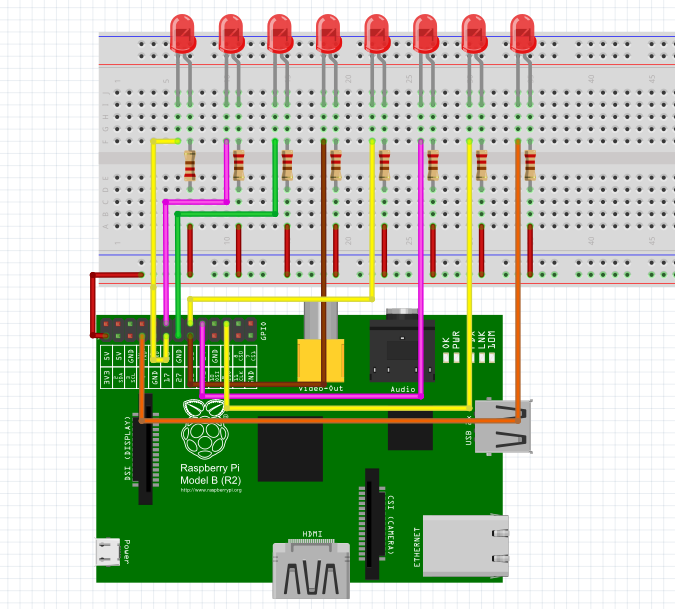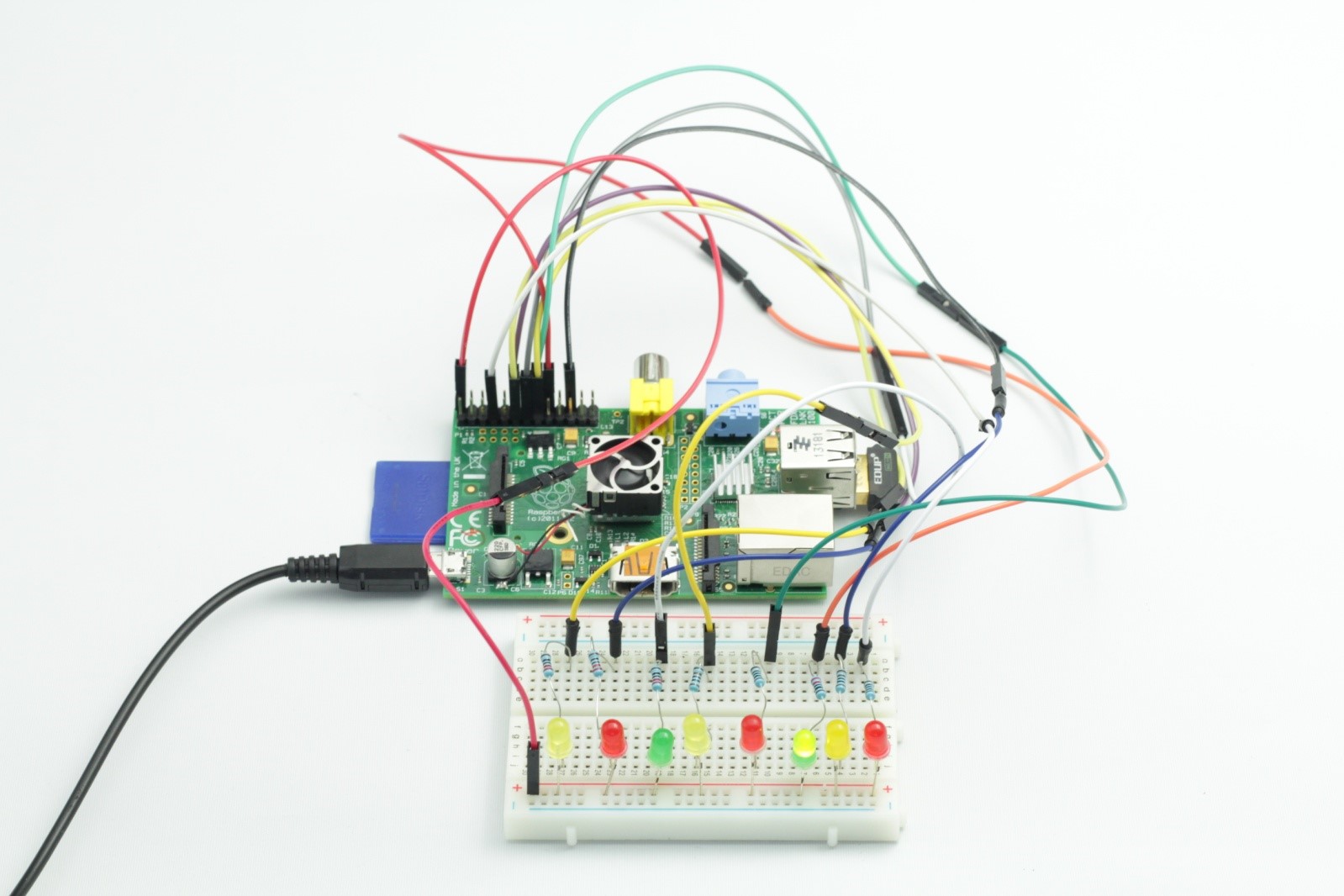Introduction
In this lesson, we will learn how to make eight LEDs blink in various effects as you want based on Raspberry Pi.
Experimental Conditions
– 1*Raspberry Pi
– 1*Breadboard
– 1*Network cable (or USB wireless network adapter)
– 8*LED
– 8*Resistor (220Ω)
– Jumper wires
Experimental Principle
Set GPIO0 to GPIO7 to low in turn by programming, then LED0 to LED7 will light up in turn. You can make eight LEDs blink in different effects by controlling their delay time and the order of lighting up.
Experimental Procedures
Step 1: Connect the circuit as shown in the following diagram

Step 2: Edit and save the code with vim (see path/Rpi_UniversalStartKit/02_8led/8Led.c)
Step 3: Compile the code
gcc 8Led.c -lwiringPi
Step 4: Run the program
./a.out
Now, when you press Enter, eight LEDs will light up circularly and render different effects.

Further Exploration
We can write the blinking effects of LEDs in an array. If you want to use one of these effects, you can call it in the main() function directly.
8Led.c
#include <wiringPi.h>
#include <stdio.h>
//make led_n on
void led_on(int n)
{
digitalWrite(n, LOW);
}
//make led_n off
void led_off(int n)
{
digitalWrite(n, HIGH);
}
int main(void)
{
int i;
if(wiringPiSetup() == -1){ //when initialize wiring failed,print messageto screen
printf("setup wiringPi failed !");
return 1;
}
for(i=0;i<8;i++){
printf("linker LedPin : GPIO %d(wiringPi pin)\n",i); //when initialize wiring successfully,print message to screen
}
for(i=0;i<8;i++){ //make 8 pins' mode is output
pinMode(i, OUTPUT);
}
while(1){
for(i=0;i<8;i++){ //make led on from left to right
led_on(i);
delay(100);
led_off(i);
}
// delay(500);
for(i=8;i>=0;i--){ //make led off from right to left
led_on(i);
delay(100);
led_off(i);
}
}
return 0;
}
Python Code
#!/usr/bin/env python
import RPi.GPIO as GPIO
import time
pins = [11, 12, 13, 15, 16, 18, 22, 7]
def setup():
GPIO.setmode(GPIO.BOARD) # Numbers GPIOs by physical location
for pin in pins:
GPIO.setup(pin, GPIO.OUT) # Set all pins' mode is output
GPIO.output(pin, GPIO.HIGH) # Set all pins to high(+3.3V) to off led
def loop():
while True:
for pin in pins:
GPIO.output(pin, GPIO.LOW)
time.sleep(0.5)
GPIO.output(pin, GPIO.HIGH)
def destroy():
for pin in pins:
GPIO.output(pin, GPIO.HIGH) # turn off all leds
GPIO.cleanup() # Release resource
if __name__ == '__main__': # Program start from here
setup()
try:
loop()
except KeyboardInterrupt: # When 'Ctrl+C' is pressed, the child program destroy() will be executed.
destroy()
